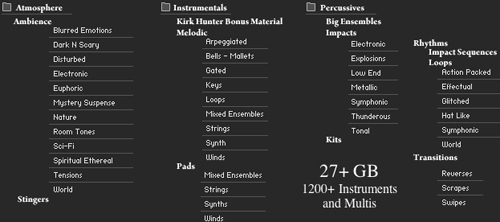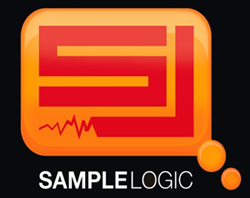Review: Morphestra Soft Synth, by Joel Douek
UNION SQUARE, MANHATTAN: I was lucky enough to first see Sample Logic’s new virtual instrument Morphestra in action at its recent product launch in NYC.
Watching Brooklyn-based owners/creators Joe Tripiani and Keith Robinson demonstrate some of the particularly evolved multis, I could not help but squeal with delight as that elusive “one finger cue” materialized before my ears. As a voracious devourer of new sounds and samples, I was keen to put it to use right away on my next TV score.
PLUGGING IT IN
A few days later my own copy arrived pre-installed on a custom pocket Glyph hard drive. There is certainly great convenience in delivering a sizable library this way: I was up and running in under five minutes. Any problems with the drive or its content and Glyph will replace it without issue.
Morphestra comes with its own Native Instruments Kontakt Player, although if you own the full version of Kontakt 3 or 4 it will load into that instead. It can be used either as plug-in (VST, AU, RTAS or DX) in your DAW of choice, or as a standalone. Its giant 23 Gb library is largely derived from real orchestral samples which have been mangled and morphed in musical ways – hence its name. Because of this, its sounds emphasize sophisticated, organic qualities, making them sit particularly well along side an orchestral palette.
GETTING AROUND
Navigating was straightforward: its over 1100 instruments are organized into Atmospheres (ambiences and stingers), Instrumentals (orchestral sounds, melodic patches and pads), and Percussives (impacts, hits, transitions and rhythmic loops). These are further subdivided into useful categories, such as “Mystery Suspense” and “Spiritual Ethereal”, all organized clearly with the needs of the film, TV & video game composer in mind.
An excellent set of multis are also provided, including offerings from top composers Bill Brown, Mark Isham, David Lawrence, Rupert Gregson-Williams and Tom Salta. A selection of “Quick Kits” multis map a wide variety of well-matched rhythm loops across the keyboard. Morphestra also adds an array of filters, effects and arpeggiator presets, all dressed in cool rustic skins.
CONDUCTING THE MORPHESTRA
I loaded up a couple of instances of Kontakt 3 with Morphestra multis in my Mac Pro, Pro Tools HD 8.01 session. I felt daring and decided to use more than one finger for the space-themed documentary I had enlisted its help for. The results were astounding, rich and evocative. I doubled the melodies and arpeggiating textures with the “Symphonic” Quick Kit multi, whose varied, percolating rhythms easily allowed me to build the energy over the course of the cue. A couple of cool swipes and swishes from the “Transitions” section and I was done!
Set against more complex, classic orchestrations, Morphestra injected contemporary elements in very tasteful ways, which is often hard to achieve. All was smooth, stable and it played nice with the rest of the toys in the box.
WHY IT MATTERS
With the overabundance of virtual analog synths available it is refreshing to hear new approaches to creating instruments. Innovators like Sample Logic, Spectrasonics, Tonehammer, Applied Acoustics and Pendle are definitely pushing the limits and expanding our musical resources in surprising new ways. That’s where I am pointing my telescope.
I always like to imagine what Stradivarius and other such luminaries would create with today’s technologies: no doubt instruments that express complexity of craft, intense musicality, and the limitless possibilities of modern programming.
Morphestra is a deep, varied library, quick to personalize and easy to incorporate into the arsenal of any film, TV & game composer. Beyond this, it will certainly provide ideas and inspiration for electronic explorers and other artists.
The MRSP of $699 may be slightly steep, but Morphestra’s great usefulness means it will pay for itself very quickly. — Joel Douek
Joel Douek is a NYC-based film & TV composer, inventor and gadget aficionado. Visit him at http://www.otmny.com.








